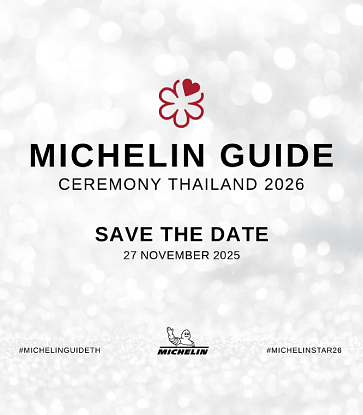If you talk about Thailand’s noodle dishes, 'Phad Thai,' or more commonly spelt 'Pad Thai,' is guaranteed to be mentioned by both locals and foreigners alike. However, other regional noodle dishes are waiting to be explored. One of them is Kuay Tiew Sen Chan Phad Pu (stir-fried rice noodles with crab meat), a coastal province in Eastern Thailand.
How does this regional noodle dish taste, and how easy is it to make? We tapped Chef Phanuphon ‘Black’ Bulsuwan, a Chanthaburi native, for the scoop. You might know his MICHELIN-approved Blackitch in Chiang Mai, but here is a fun fact—he's actually from Chon Buri, Chanthaburi's seaside neighbour. Today, Chef Bulsuwan breaks down why Kuay Tiew Sen Chan Phad Pu is the Eastern region’s star noodle dish and shows us how to whip it up at home.

“I was born in Si Racha, Chon Buri Province. Although my family moved to Chachoengsao to run a restaurant business, we still have many cousins living in the seaside town. So, I spent much of my childhood in Eastern cities like Pattaya and Chon Buri. The region is my home.”
The engineer-turned-chef recalled that one of his family’s favourite recipes is Kuay Tiew Sen Chan Phad Pu. “Originally from Chanthaburi, the dish is a popular dish throughout the East. Sen Jan is a chewier version of thin rice noodles. The sauce used in this dish is sweeter than Pad Thai. We want the sauce to coat the noodles, so we take more time to stir-fry. Regular thin rice noodles would break, which is why we use the chewy Sen Chan.”
For the protein, Chef Bulsuwan highlights that crab is plentiful in Thailand’s eastern sea. You can use parts of blue swimmer crab or just the lump meat. Toss in some bean sprouts and chives, along with the zing of sliced unripe mango. “In Chanthaburi, some people like to squeeze in kumquat. However, you won't find the usual peanuts, chillies, sugar, and lime like you do in Pad Thai. Kuay Tiew Sen Chan Phad Pu is a stir-fried dish that showcases a delightful balance of sour and sweet flavours, with a hint of saltiness to finish. You might even call this the Eastern-style Pad Thai,” explains the chef, a proud native of Eastern Thailand.
Join the talented chef as he shares his delicious Kuay Tiew Sen Chan Phad Pu recipe, perfect for whipping up at home!

Kuay Tiew Sen Chan Phad Pu (Stir-Fried Rice Noodles with Succulent Crab Meat)
Sauce ingredients:- 6 pieces, dried chillies
- 4 bulbs, shallots
- 2 tablespoons, coconut sugar
- 4 tablespoons, tamarind paste (with pulp filtered out)
- ½ cup, water
- a pinch, salt or fish sauce
Noodle ingredients:
- 200 grams, flat rice noodles
- 300-500 grams, blue swimmer crab or serrated mud crab
- 3 cups, bean sprouts (with roots removed)
- 100 grams, chives
- A handful, cooking oil
- As much or as little as you’d like, banana blossom, tiger’s herb, kumquat, sliced unripe mango (you can use lime instead of kumquat)
- The sauce, mentioned above

Instructions:
1. Soak the noodles for 15 minutes. Then, place it in a colander and cover it with cheesecloth. While waiting for the noodles to soften, clean the crab and cut it into four parts.
2. Start preparing the sauce by deseeding the chillies and soaking them in water until soft. Peel the shallots, rinse them, and let them dry. Pound the chillies and shallots together in a mortar.

3. Heat the oil in a hot pan. Stir-fry the paste from the previous step until fragrant. Add the coconut sugar, tamarind paste, and salt.
4. Once the sauce is boiling, add the crab. Stir-fry it with the sauce until cooked through. Then, add the Sen Jan and stir-fry until the noodles are evenly coated.
5. Add the chives and bean sprouts, and stir-fry until cooked.
6. Serve with banana blossom, tiger’s herb, and sliced unripe mango. Squeeze the kumquat over for authenticity. Enjoy!

Tips from the chef:
- For added fragrance, roast the chillies before soaking them. If you want the red colour to stand out more, choose larger chillies, such as spur chillies. If you prefer less or no spiciness, deseed the chillies, keeping the seeds for extra heat.
- While pounding, add some salt to reduce the strong smell of the chillies before incorporating the shallots. The literal translation of this process is “Kill the chillies” (Kha Prik).
- Always soak the noodles for 10-15 minutes to soften it, then rest it in a colander. Without soaking, you'll need significantly more time to stir-fry it. Sen Chan differs from Sen Lek (a thin noodle that looks similar) in that Sen Lek can be cooked right away.
- Before stir-frying the crab with the other ingredients, fry the cut parts and meat first until the oil evenly coats them, then set them aside. However, if you're using lump meat, avoid stir-frying it with the other ingredients, as it will become soggy. Instead, simply sprinkle it on top once everything is cooked.

You can easily whip up Kuay Tiew Sen Chan Phad Pu at home, but if you find yourself in Thailand’s East, make sure to indulge in the local restaurant scene! Chef Bulsuwan points out that, beyond the stunning landscapes and fresh seafood, there’s a whole world of unique flavours waiting to be discovered. Don't miss out on the chance to sample wild food—it's an unforgettable culinary adventure that will elevate your trip to the East.
For the latest updates on travel destinations, reach out to the TAT Call Centre at 1672 or connect with them on Facebook at the TAT Contact Centre. Your adventure is just beginning! Join us in creating unforgettable travel experiences by tagging your posts with #MustDoinThailand and #AmazingThailand.
Illustration image: © Jirawat Veerakul/ MICHELIN Guide Thailand




















